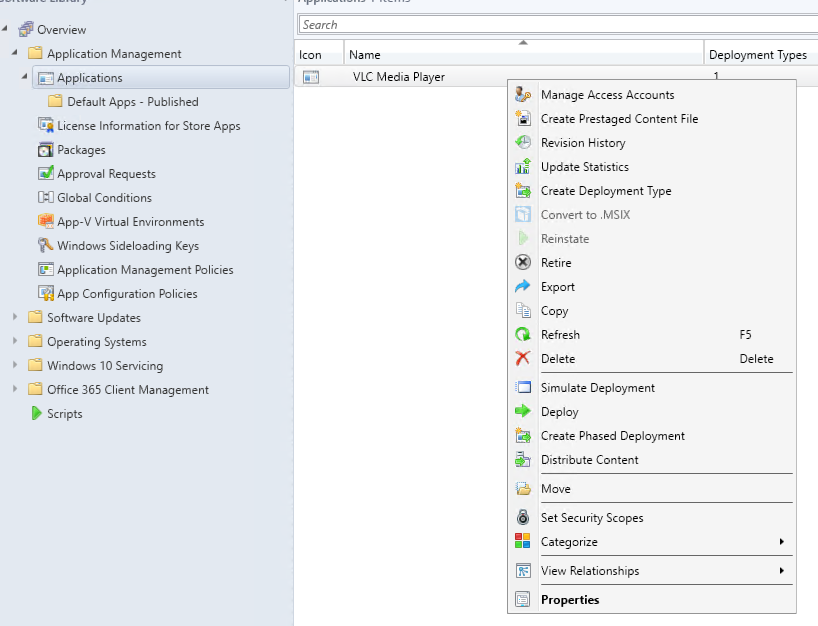
- #Sccm patch deployment best practices install
- #Sccm patch deployment best practices update
- #Sccm patch deployment best practices Patch
- #Sccm patch deployment best practices windows 8.1
- #Sccm patch deployment best practices code
#Sccm patch deployment best practices Patch
Patch management also adjusts features, not only software flaws, as security experts’ released patches often might mean enhanced functionality that once deployed will improve the system. By patching them an organization is less exposed to cyberattacks or security breaches because the company will remediate bugs before them getting known to threat actors.
#Sccm patch deployment best practices update
Even though Microsoft had released a security patch that addressed the vulnerability in Windows OS two months before the ransomware attack began, many individuals and organizations alike did not update their systems in time and thus remained exposed. Or do you remember the notorious WannaCry ransomware attack? Well, it happened due to unpatched systems that ended up being exploited by malicious hackers. Look at PrintNightmare that targeted Windows Spooler or the 16 years old vulnerability present in HP, Samsung, and Xerox print drivers. System vulnerabilities have gained ground recently. Patches can be deployed to your entire infrastructure including software/operating systems, routers, IoT equipment, servers, and more. The need to completely redesign the program is therefore out of the question. Every time a security flaw is discovered or the program’s functionality needs to be enhanced, software developers create a patch to address these aspects.
#Sccm patch deployment best practices code
A patch is a piece of software code that improves an installed program – you can literally think about it as a “bandage” applied to software. Simply put, patch management distributes and applies updates to your software whenever a vulnerability is detected. Also check out this post to automate sending a report out on what updates are being deployed.Patch management is a process that involves the acquisition, review, and deployment of patches on an organization’s systems. After having a play check out this post for some best practices to setting up all your Automatic Deployment Rules including Piloting your updates to a pilot group for 7 days.ģ4.

#Sccm patch deployment best practices install
Give it some time to download updates and distribute them then on the client machine run a machine policy update and verify updates install using Software Centerģ3. You can monitor progress on the site server checking Program FilesMicrosoft Configuration ManagerLogsruleengine.logģ2. Right click on your newly created ADR and click 'Run Now'.
#Sccm patch deployment best practices windows 8.1
Name it 'ADR: Windows 8.1 圆4 Updates' and select a UNC share for storage of the software updates.ģ1. Choose Create a new deployment package.Ģ5. Change the User Experience to 'Display in Software Center and show all notifications'Ģ4. Customize the Deadline to 'As soon as possible'.ġ9. Click OK (Not to important for the demo as you can run it manually)ġ7. Click Customize and choose to run the rule every second Tuesday at the appropriate time depending what time zone you are in. Otherwise you can change the date range for the example.ġ5. Click Preview, if you are doing this on Patch Tuesday you will see all the applicable updates that will be deployed. Choose Update Classification, set it to “Critical Updates” OR “Security Updates” ORġ1. Choose Product, set it to 'Windows 8.1'ġ0. Choose Date Released or Revised, set it to Last 3 weeks.ĩ. Also optionally enable the Wake-on-LAN tickbox.Ĩ. Ensure 'Automatically deploy all software updates found by this rule, and approve any license agreements. The other Option should really be called 'Wipe previous updates from Software Update Group' as that's what it does.Ħ. Change the Option to 'Create a new Software Update Group'. Click Browse and select your target collectionĤ. In the Wizard name your ADR 'ADR: Windows 8.1 圆4 Updates'ģ. Under the Software Library Node Software Updates click Automatic Deployment Rules then select 'Create Automatic Deployment Rule' from the RibbonĢ. In this example I am deploying Windows 8.1 圆4 critical, security and 'updates' updates.ġ.

The best way to use Automatic deployment rules (ADR) is to have them run on Patch Tuesday which is the second Tuesday of the month when Microsoft releases their updates generally before 11:00 PST/PDT (I am Australian based so I set ADRs to run Wednesday Morning). Automatic deployment of updates is one of the best features of SCCM.


 0 kommentar(er)
0 kommentar(er)
